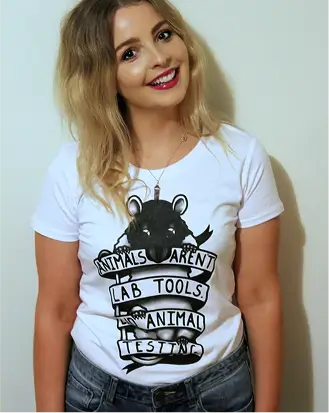Today is Halloween in New Zealand, a fitting time to expose a seriously haunting use of animals for science…
Picture this…scientists taking the heart out of a pig and inserting it into the chest of a human, like a twisted Frankenstein experiment!
No, this is not a sequel to the book “Frankenstein”. This is xenotransplantation - the science of removing organs or cells from one species and implanting them into a different species. The pinnacle of that is the transplantation of animal organs into human patients, and the spookiest part about it is this story of spine-tingling science is happening right now!
THE HEARTBREAKING REALITY OF XENOTRANSPLANTATION
Every year, thousands of people around the world find themselves in the unfortunate position of waiting for a suitable organ transplant. It can take many months before a transplant becomes available.
Some scientists are aiming to fill that void through xenotransplantation…taking genetically modified animals and using them as organ donors for humans in need of a transplant. But don’t be fooled! These animal experiments come with hair-raising challenges and some seriously creepy ethical concerns.
ORGAN TRANSPLANTS ALWAYS COME WITH DEADLY RISKS
Imagine going through the trauma of invasive surgery, only to have your body reject the organ because it is recognised as a foreign object (even when it's from another human). This happens more frequently than you might expect. The most common cause of failure with organ transplants is due to the fact that our bodies see the new organ as a foreign object and try to fight it.
Now, imagine the surgeon transplanted an organ from a completely different species… not only is that freaky, but it’s also extremely dangerous – naturally, transplanting organs from a different species will cause a stronger immune response and a higher chance of failure!
Last year, the news was flooded with the transplantation of a pig’s heart into a 57-year-old man. He was not a candidate for a donated heart, and options were running out. What was celebrated as a breakthrough at the start did not last long. A few weeks after the surgery, the xenograft failed, and sadly, life support was withdrawn on day 60.
While this outcome is ghastly on its own, what happened next was even more frightening. Postmortem findings revealed that a pig virus was present in some of the patient’s blood cells!
As the example above shows, there are more risks associated with xenotransplantation than post-operative organ failure. This type of science raises the terrifying possibility of a zoonotic pandemic, much like the outbreaks we've seen in the past. Remember Mad Cow Disease, Ebola, Avian flu, and SARS? All are born from cross-species contamination. Now that’s scary!
EVEN IN AOTEAROA, SPOOKY SCIENCE IS ON OUR DOORSTEP…
You may be wondering what all this has to do with us in New Zealand. Well, this spine-tingling science is closer than you may think.
We’ve discovered a variety of studies either conducted in NZ or conducted overseas using pig organs provided by NZ companies that involve both animal-to-animal xenotransplantation and animal-to-human xenotransplantation.
For example:
- Encapsulated pig pancreatic islet cells were transplanted into human patients to try and treat type 1 diabetes.
- Cells from the brains of newborn pigs were implanted into the brains of various animals to test the effect against several human diseases (for example, Parkinson’s disease, stroke, and Huntington’s disease).
- Based on animal studies, human trials were approved using the brain cells of newborn piglets. These were implanted into humans to try and treat Parkinson’s disease.
- Pigs were genetically modified to try to increase the chances of their kidneys being accepted by humans.
IT MAY BE FRIGHTENING, BUT THIS TERRIFYING TALE HAS A TWIST
In the world of spooky science, we're witnessing a revolution in medical engineering.
Picture this…scientists creating artificial organs using 3D printing with patient-derived cells – just like something straight out of a science fiction movie!
Researchers worldwide are making innovative and incredible discoveries, like the "Sacrificial Writing Into Functional Tissue" (SWIFT) technique developed by a team at Harvard. This allows the 3D printing of blood vessels, a critical step for successful organ transplantation, ensuring the delivery of oxygen and nutrients to all tissues.
Researchers from around the world have been taking on new challenges by growing human organ tissue in their labs. These organs are ethically sourced, fully biocompatible, and come with a drastically reduced risk of rejection.
While it's not "happily ever after" just yet, these advancements offer a more ethical and promising path forward. It's time for Aotearoa, New Zealand, to steer clear of the mad scientist's lab and into the light of safer, more ethical animal-free methods!
Learn more about xenotransplantation and access the references for the facts above here.
*While this article was intended to be an engaging way of linking Halloween with some of the spooky science we’ve discovered, animal experimentation is no laughing matter. If you’re serious about ending animal testing in New Zealand, please consider joining our Animal Defenders Squad.





